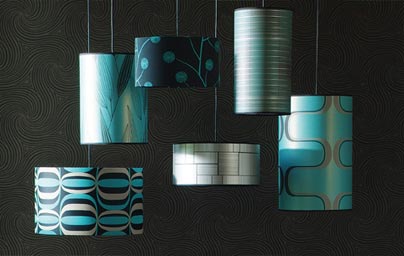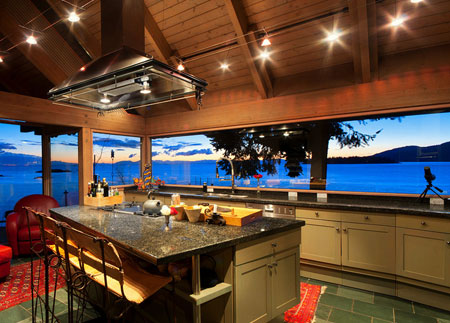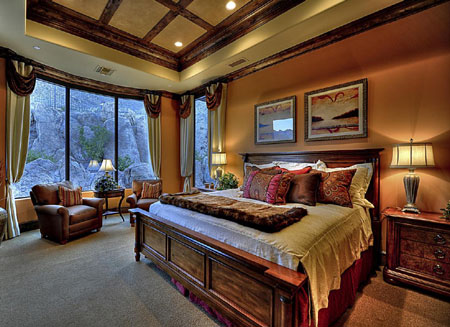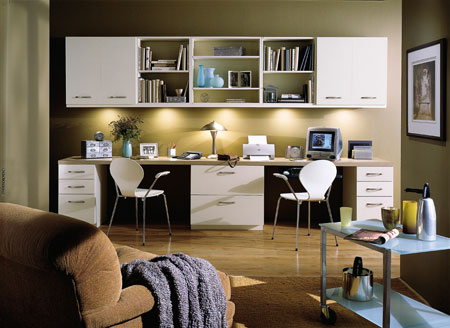Beautiful lighting options
With such a wide selection to choose from, it's easy to light your home beautiful.
How to choose the right light fitting
• Choose a bold print shade, then tie it into your room scheme by repeating its colours in cushions. Make the shade the loudest pattern and colour in the room so it stands out and isn't confused by other patterns. Go for a plain backdrop to keep the rest of the room feeling calm and simple. If you're going for a bold shade, keep the lamp base simple so the shade is the focal point.
• Add sparkle to any room with a striking display of glass table lamps. Group together pretty glass table lamps on a sideboard to add impact as well as subtle accent lighting to your dining room. Boost the twinkle factor of your glass lamps by placing them on mirrored surfaces. Give the display a wow factor by framing the area with a bold wallpaper behind
• Turn your drab hallway into a stunning entrance with well-chosen feature lighting. Feature lighting is a perfect choice to bring a touch of glamour to dark or narrow spaces. Use a row of mirrored lights to add a pretty touch. Choose lighting that ties in with your wallpaper and mirrors the pattern for a co-ordinated look.
Lighting your hallway
A single chandelier can bring a touch of glamour and a sense of occasion to a hallway. They don't really provide a great deal of illumination though, so it's likely you'll have to fit other lights, too. A good way to do this is to direct a corner-fitted spotlight onto the chandelier to highlight its shape and to reflect light off its drops. Over the stairs, where visibility needs be good, halogen lights are a good choice, while wall lights are best avoided, as they only get in the way, especially in narrow hallways.
Lighting your living room
Think dramatic, whether with eye-catching central shades, table or floor lamps. One hot look is to group lights together in clusters, particularly pendants, usually in odd numbers, and to hang them low over focal pieces, such as the coffee table.
If you're decorating the room from scratch, it's a good idea to plan where your lighting points and sockets should be installed at an early stage. This will mean that the lighting will suit your major pieces of furniture and not the other way around, and you won't have to trail unsightly cables across the room. Also, consider arranging for your table and floor lamps to be wired on their own separate circuit with dimmer switches, so you'll be able to control them all from one neat place on the wall.
In a living room, it's worth highlighting favourite pictures, books, and even plants or pieces of furniture. A simple way to show off books is to clip a small spotlight to the underside of a shelf, while pictures can be picked out with a simple spotlight, but if they're glazed you'll need to use an 'eyeball' light that swivels and can be set to a broad beam.
Whatever the style of your home - glam, minimal or family-friendly - it's worth working the lighting in your dining room (or dining area if you've got a kitchen-diner) so that it draws attention to the table. That said, wall lights and table lamps are an added bonus because they will prove subtle sources of extra light for a special candlelit dinner.
Lighting your dining area
If you are hanging pendant shades over the table, bear in mind that they need to be low enough to create soft pools of light that will conjure up an intimate atmosphere. However, the lights must be set high enough off the table so that people sitting at the table can actually see each other. Dimmer switches are a must here, so you can easily adjust the lighting to suit the mood.
Dining rooms in particular benefit from lighting tricks. To make yours appear grander and taller, use floor or ceiling-recessed halogen bulbs to create vertical beams of light and, of course, hang those pendant lights as low as you dare.
Lighting your kitchen
Kitchen lighting must be both practical and flexible - and will almost always be fixed. Of course, the best option is to plan your lighting when you design your kitchen, but if you've moved into a home with a badly lit kitchen, you can, with the help of a good electrician, add it later. So what are the must-haves and must-nots?
Pendants are not ideal in small kitchen, as they will inevitably attract grease and dust over time, and don't generally give off enough light to make them practical. The only place they really work is in a large conversion kitchen as an extra, more decorative source of light.
Lighting your bedroom
Choosing bedside lights? Don't just stick to table lamps - small pendant shades either side of the bed will free up bedside table space and, because they can be hung so low, create an intimate, cosy atmosphere, too. Another option is to fix lights to the wall, but remember that if you plan to read by them, they need to be just above the height of your head when you're lying down.
Dimmer switches are a must for bedrooms. Fit them to the source of your ambient light, whether this comes from an overhead light or a number of wall lights around the room. Don't forget, though, that you need to use low-voltage dimmer switches for any low-voltage fittings. You can't fit a mains voltage dimmer, so it's important to remember to check carefully before you buy.
Lighting your office
Whether it's a separate home office or simply a corner where you pay the bills and organise your diary, good task lighting is essential. In a separate room, it's worth investing in halogen spot downlighters as well as a good desk lamp, and don't forget, you can use decorative touches, such as clip-on picture lights to show off paintings or notice boards, and even a floor-standing task light to make the room feel less like an office and more like home.
If space is tight, clip-on spotlights are useful, and you can move them about the room as you need to. Your light should be able to take a 60-watt bulb at least, as it must be brighter than the others in the room.







